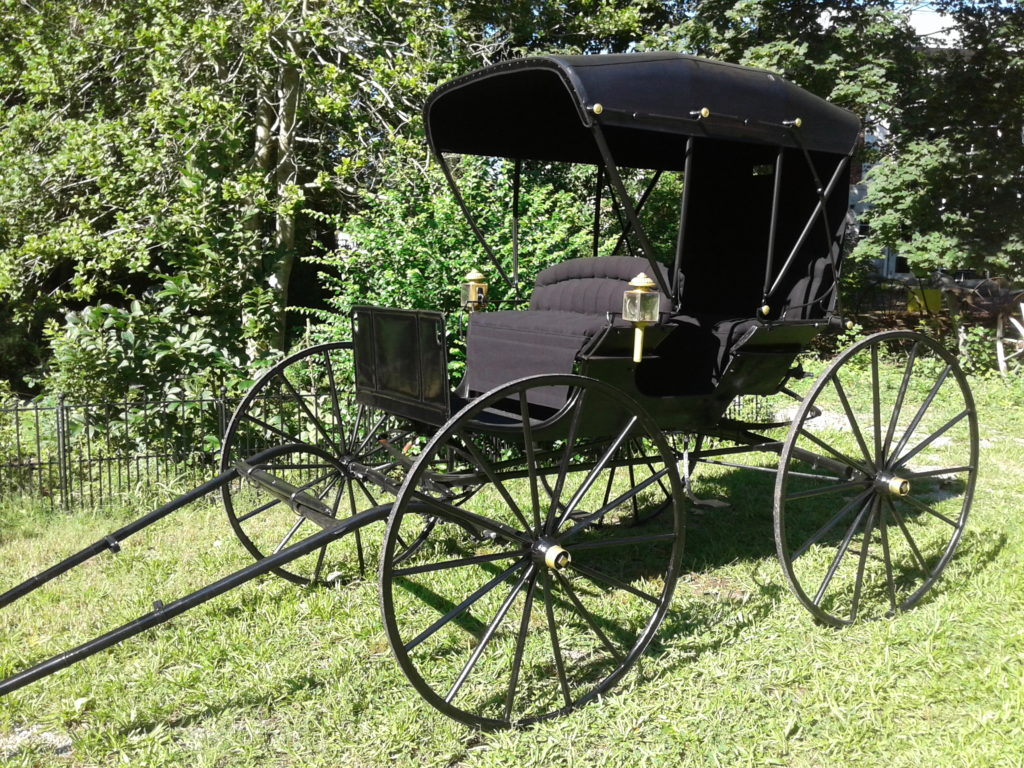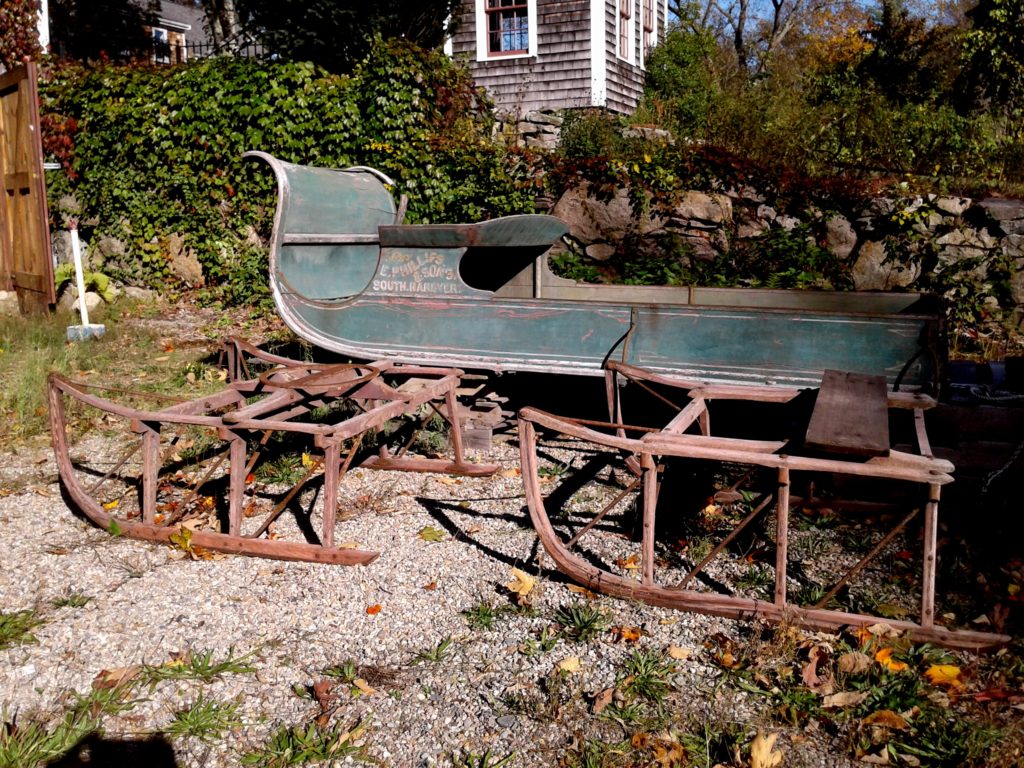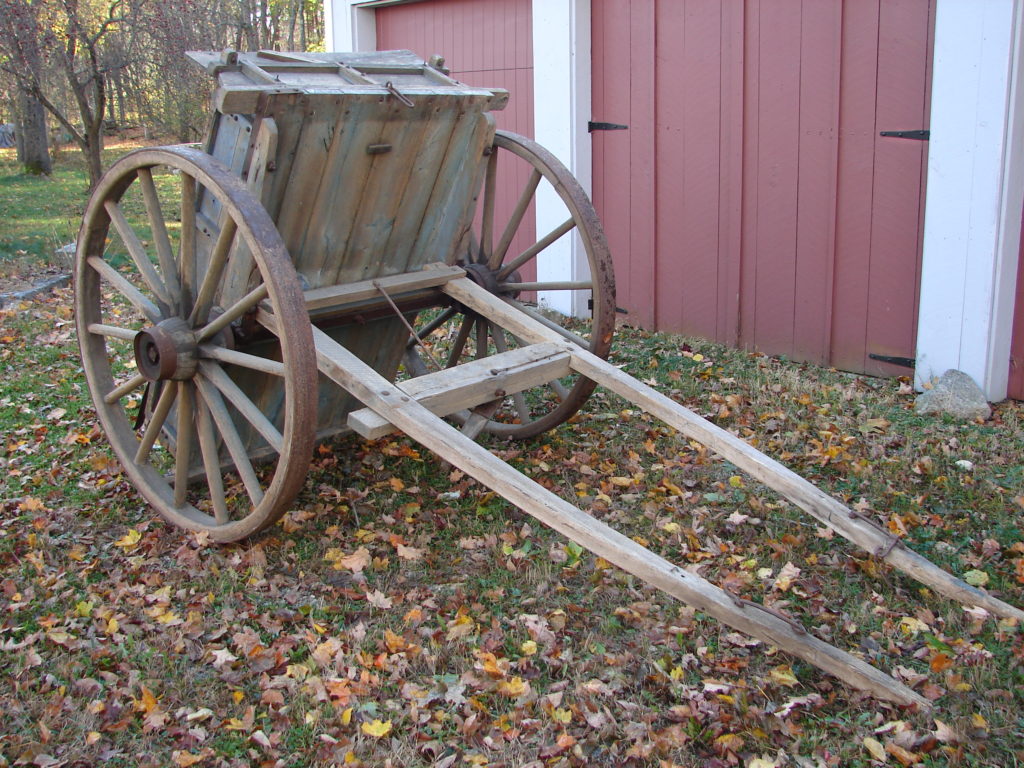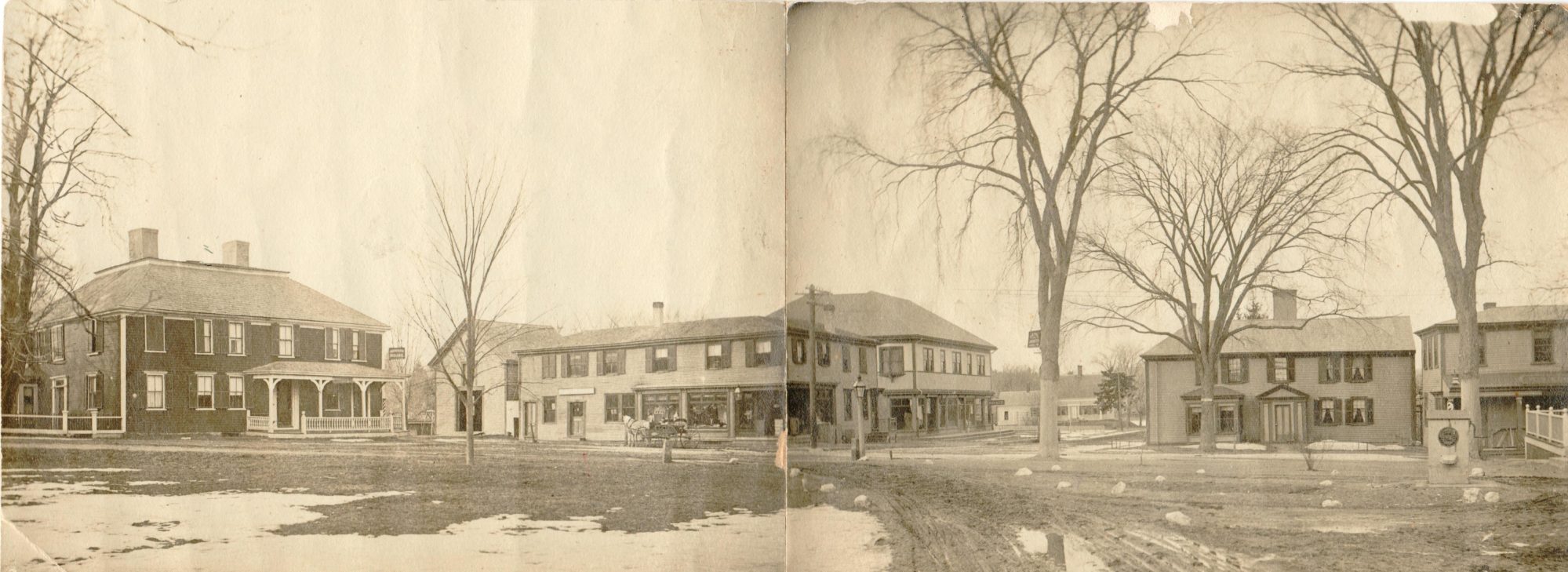
Surrey Carriage
American, ca.1860-1880
Bequest of the Fanny H. Phillips Estate, 1995
This is a rare survivor of a mid to late 19th Century carriage called a surrey. It has two seats, oil lamps, and a retractable roof. The upper section is supported on a chassis of four wheels. It has twin shafts for one horse. The carriage has a history of use in the Philips family of South Hanover. The carriage underwent a full restoration in 2020 by Hanover resident Frank “Whitey” Correira. This restoration was possible thanks to a Community Preservation Act grant and the generosity of the people of Hanover.

Carriage (Doctor’s Buggy)
American, ca.1850-1870
Bequest of the Fanny H. Phillips Estate, 1995
This one-bench, four-wheeled carriage is commonly called a Doctor’s Buggy, derived from its use by doctors and others in the mid-19th Century. This buggy has a history of ownership by Dr. Gad Hitchcock of Hanson, before passing to his descendant Fanny H. Phillips. The carriage was restored in 2016 by Hanover resident Frank “Whitey” Correira.

Wagon
American, ca.1880
Bequest of the Fanny H. Philips Estate, 1995
This wagon was used by the E. Phillips & Sons Company of South Hanover. It was a utilitarian, all-purpose useful transportation vehicle for the time. The company name is still visible on the side.

Sleigh (Pung)
American, ca.1880
Bequest of the Fanny H. Phillips Estate, 1995
The sleigh is the winter companion to the Philips & Sons wagon. This type of sleigh was known as a pung. It has two separate runners called bobs underneath in place of wheels. It served the same purpose as the wagon for hauling all matter of goods, but through the snow. IT is currently undergoing restoration.

Ox Cart
American, 19th Century
Bequest of the Fanny H. Phillips Estate, 1995
This simple yet incredibly sturdy cart is also called a dump cart. The cart section can be loaded with heavy materials and then unhooked in the front to easily dump out the contents. It was traditionally pulled by an ox, which was stronger but slower than a horse.


